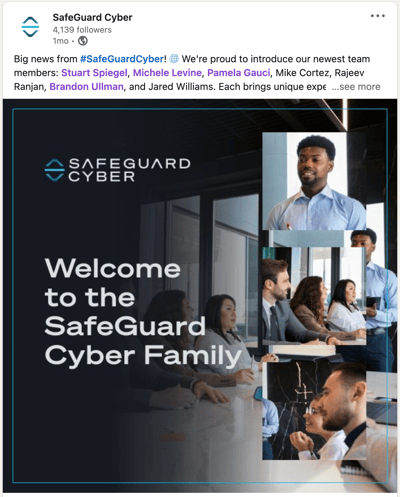 This blog post is inspired by our recent real-life experiences and aims to shed light on the growing risks of CEO impersonation. We’ve observed a disturbing trend where our new hires were targeted in sophisticated CEO impersonation attacks.
This blog post is inspired by our recent real-life experiences and aims to shed light on the growing risks of CEO impersonation. We’ve observed a disturbing trend where our new hires were targeted in sophisticated CEO impersonation attacks.
These incidents went beyond traditional email phishing, extending into more personal channels like text and mobile messaging. The attacks were tailored to exploit the vulnerabilities of remote employees, who can be more isolated and potentially less aware of organizational communication norms.
In the evolving landscape of corporate communication, CEO impersonation presents significant risks, particularly through diverse communication channels. Such impersonation attacks, often executed through social engineering, can have devastating impacts on businesses including financial loss, brand damage, and data loss.
But why CEO impersonation? The answer lies in the authority and trust associated with the role. Employees, especially newer ones, are less likely to question directives that seem to come from the top. This inherent trust in leadership makes CEO impersonation a particularly effective and dangerous form of fraud.
Rising Threats of CEO Impersonation
CEO impersonation scams are increasingly challenging to detect. Spam filters often fail to catch impersonation emails, leaving even the most vigilant employees vulnerable. These scams can lead to substantial financial losses, time wastage, and leaks of sensitive information.
Common impersonation indicators include:
- Incorrect email address
- Unusual requests
- Unusual language, grammar, and spelling
- Urgent tone
- Emphasis on confidentiality
- Unsolicited contact or attachments
- Domain spoofing
- Suspicious links or attachments
Expanding Beyond Email
Traditionally limited to email-based phishing, CEO fraud is evolving. Cybercriminals are now exploiting other communication platforms, including social media, to carry out these scams. With the aid of artificial intelligence, these attacks are becoming more sophisticated, using AI-powered tools to mimic voices and speech patterns, making them more convincing and harder to detect.
New Hires Vulnerability
New hires can be particularly susceptible to CEO impersonation scams. Unfamiliar with the company's communication norms and executive team, they might not recognize fraudulent requests. This vulnerability emphasizes the need for comprehensive training for new employees on cybersecurity best practices and recognition of potential scams.
Remote Work and Cybersecurity Awareness
The rise of remote work has amplified the risks of executive impersonation. Lack of direct oversight and potentially lower cybersecurity measures in home offices provide a conducive environment for such attacks. Additionally, the lack of cybersecurity awareness among employees can lead to inadvertent disclosures of sensitive information or compliance with fraudulent requests.
Mitigating the Risks
Effective strategies to combat CEO impersonation include establishing a robust verification protocol for executive requests and implementing multi-factor authentication (MFA). Regularly updating these protocols and conducting employee training sessions on identifying and responding to suspicious activities are crucial.
In addressing these challenges, tools like SafeGuard Cyber's FirstSight platform can play a pivotal role. FirstSight offers a sophisticated Contextual AI approach, providing comprehensive visibility across multiple communication channels. As a result, this platform can be especially beneficial in detecting subtle signs of impersonation and other sophisticated threats that traditional methods might miss, thus offering an additional layer of defense in a landscape where CEO impersonation tactics are constantly evolving.
In conclusion, as CEO impersonation tactics expand across various communication channels, businesses must proactively address these risks. This involves not only technological solutions like MFA, email filters, and advanced platforms like FirstSight, but also a strong emphasis on employee education and creating a vigilant organizational culture. Especially for new hires, orientation in cybersecurity practices is essential to fortify the first line of defense against such sophisticated attacks.
Click here to get your complimentary copy of Gartner’s published report, How to Respond to the 2023 Cyberthreat Landscape.
If you are interested in learning more about the SafeGuard Cyber solution, you can take a quick 5-minute tour.

